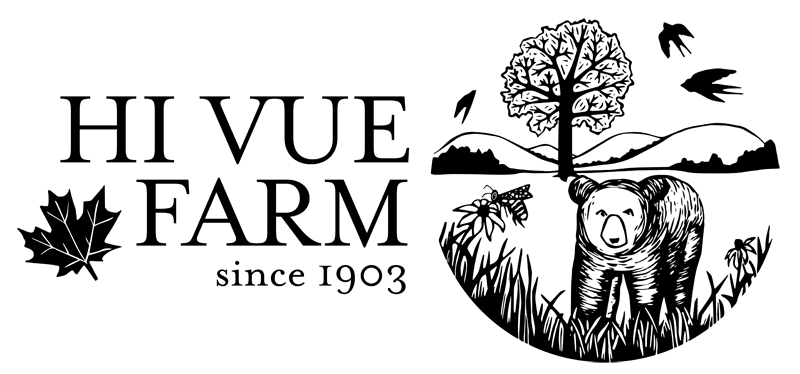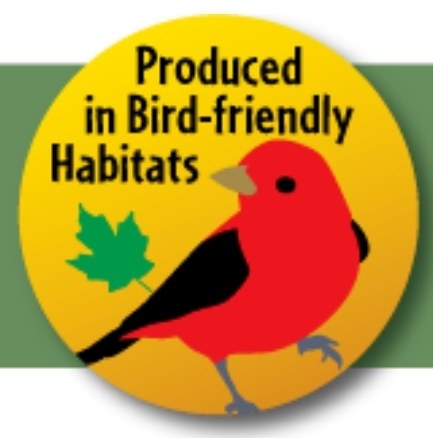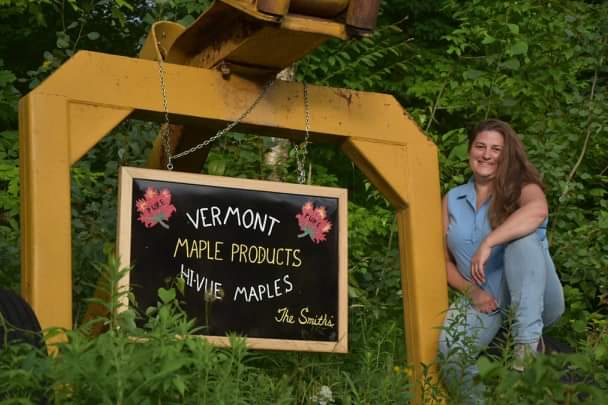We’ve created a Bird Friendly Maple Farm that considers bird habitat as a primary goal of forest management.
Committed to Reducing Carbon Dioxide Emissions
We are a Carbon Offset Farm!
It’s official – we are committed to reducing carbon dioxide emissions as a Carbon Offset Farm! What does this mean? It means that we have made a commitment to our forest to maximize the amount of carbon offset our trees can produce. Hi Vue Maples has joined a partnership with fellow landowners in the Cold Hollow Mountains of Vermont to preserve our forest and farm land as a collective whole to reduce and store carbon dioxide emissions (Green House Gases) caused in other parts of the country and world.
We do this by “sequestering” (capturing and storing) greenhouse gases with our trees and crop land. The healthier forest we have – the more carbon is stored. Trees store carbon by photosynthesis – they take carbon from the atmosphere and convert it into carbon based sugars to fuel their tissues.
Stewardship
What’s a healthy forest and why do we qualify? Stewardship – my family has taken care of our farm for generations. Our goal throughout the years has been to create quality maple syrup while taking care of the land.
How we take care of the land
- encouraging as many varieties of trees as possible
- watching for invasive species
- selectively cutting trees for logs and firewood
- maintaining wildlife habitats
Our farm covers 400 plus acres – 200 of which is our maple sugar bush. The remaining 200 consist of fields used for agriculture purpose and multi-use forest. We have created high quality bird habitat in this area to increase our migratory songbird habitat. These steps that began a 100 plus years ago has allowed us to transition to a carbon offset farm with no major changes, just a deep rooted future commitment to keeping our farm as healthy as possible to help the world reach the goal of net zero.
Partnerships
This project was the undertaking of the local conservation group Cold Hollow to Canada (CHC) – who’s goal is to preserve 23,000 acres in the Cold Hollow Mountain Range by 2030. Programs such as carbon offset are some of the ways CHC can help landowners preserve the forested lands in our area. Preserving the Cold Hollow region supports wildlife corridors, critical bird habitat and supports rural communities. The Vermont Land Trust (VLT) has partnered and been instrumental in creating this Carbon Offset Program.
Carbon Offset Maple Farm!
Hi Vue Maples is proud to announce we have officially become a Carbon Offsetting Maple Sugar Farm! Our family has always believed that if you take care of the land it will take care of you. We have been using a high standard of forest management for many years now – so the changes we…
Who Am I ?
Creating a balance of producing the highest quality maple syrup and protecting our forest landscape is our priority.
Vermont ebird & Pollinators
Birder Broker – Vermont ebird
I have spent two mornings this week learning more about my own backyard through educational programs provided by Cold Hollow to Canada. Friday was the first walk for a citizen science project – Birder Broker in conjunction with Vermont ebird. Birder Broker pairs land owners with experienced birders. We will go a total of three times this year and potentially again next year. The route takes us on about a mile walk starting at my house then past the sugarhouse to the Bliss field, from there we enter the song bird patch cut we completed this spring. After passing through the patch cut we will complete our loop in the pine forest next to Lucas Brook. All bird species are counted but our priority are migratory songbirds. Yesterday we saw an olive backed thrush, heard oven birds, several warblers and vireos. We also came across a nice size black bear print.
Richford Woodlots
This morning we had our quarterly gathering of the Richford Woodlots. My neighbor Greg hosted us on his property for a nature walk through his pollinator field and a search for the elusive salamanders. The pollinator field was full of early, mid and late plants, such as spirea, milk weed and various grasses. Some of the pollinators we found were native bees, butterflies and beetles. Greg has planted several varieties of trees for successional growth such as cedar, butternut and red oak.
Our walk then took us to a spring brook (it’s only a brook when there’s plenty of water). We managed to find a couple of salamanders in the brook itself. The biggest problem we had in looking for salamanders was our distraction level by everything around us. We learned that “sedges have edges, rushes are round and grasses have knees that bend to the ground”. That’s just an example of why I love these gatherings – the learning. I felt the edges that create a triangle on the stem of a sedge, next time I will know what sedge is.
I also learned why trees have knees! I have shared pictures of trees – mostly yellow birch with “knees”. They start with a yellow birch seed that takes root on top of an old stump. As the tree continues to grow the roots grow over the stump into the ground. As they mature more roots cover the stump but the stump is composting itself back into the soil, when the stump is fully gone – the tree remains as it formed over the stump leaving “knees”.
Follow us on Instagram for more pictures from the field!
Check out Cold Hollow to Canada to learn more about conservations activities we have going on!





